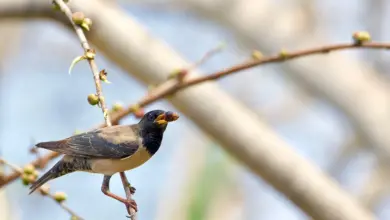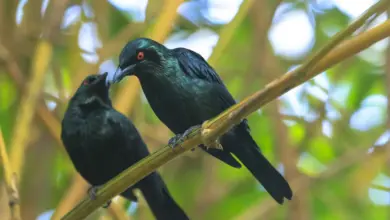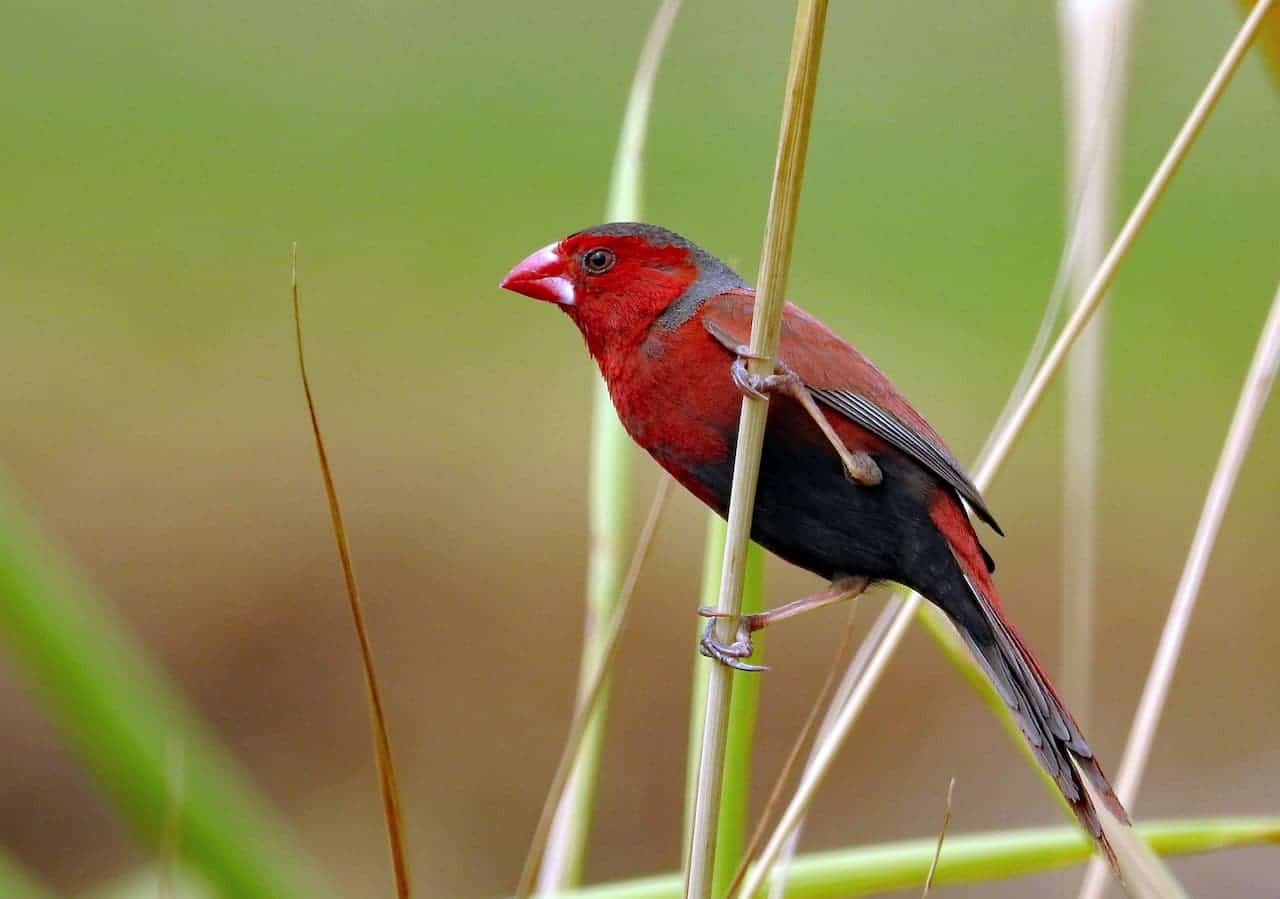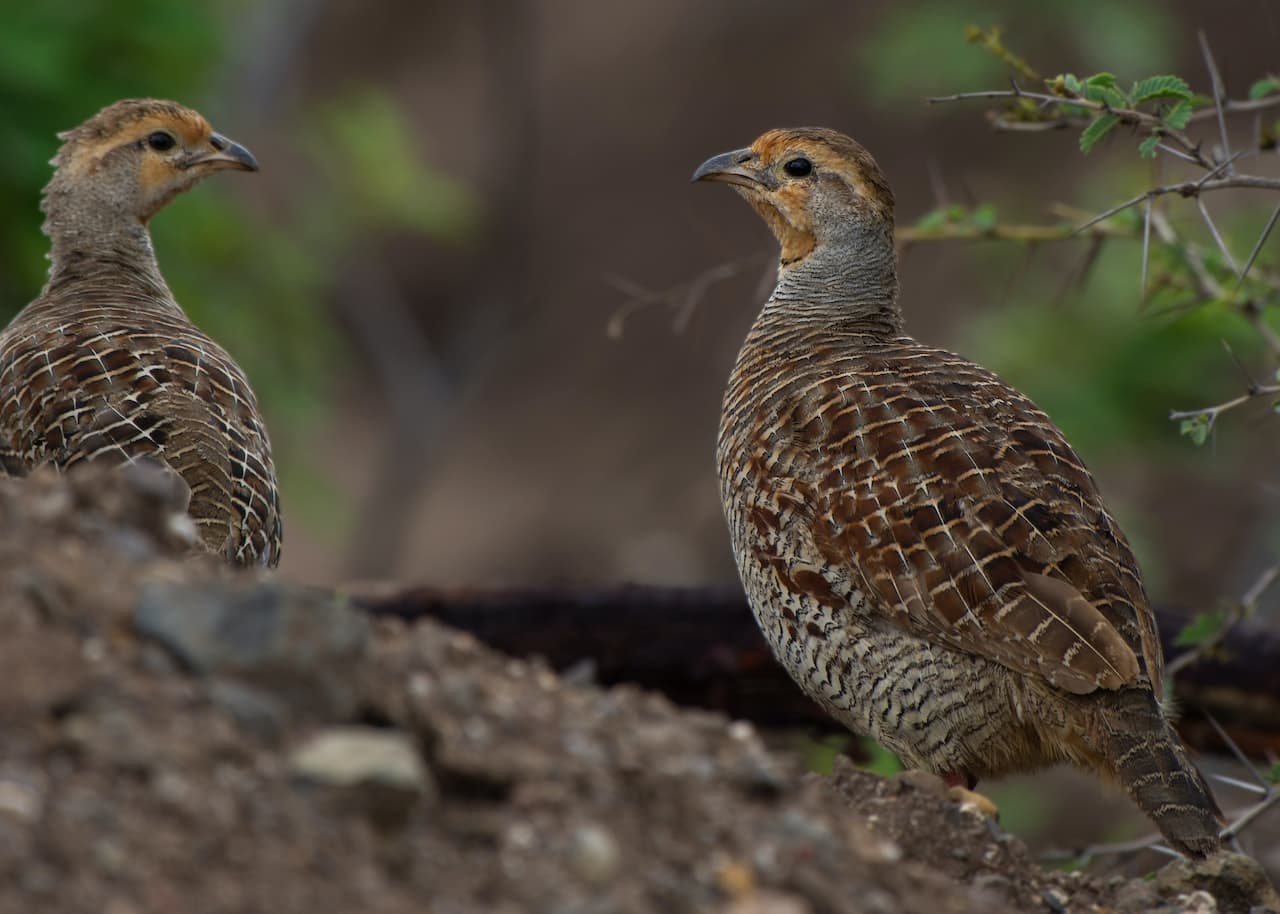Cherrie’s Tanager (Ramphocelus costaricensis)
The Cherrie’s Tanager (Ramphocelus costaricensis) was formerly known as the Scarlet-rumped Tanager, but was split as a separate species from the Caribbean form, which was itself renamed as Passerini’s Tanager, Ramphocelus passerinii.
Cherrie’s Tanagers occur in pairs, small groups, or as part of a mixed-species feeding flock, and up to a dozen birds may roost together in dense thickets at night.
Description:
The Cherrie’s Tanager is a medium-sized passerine bird. Adults average 16 cm in length (including tail) and weighs around 31g.
The adult male is mainly black except for a scarlet rump, silvery bill and dark red iris.
The female has a grey head, olive upperparts, orange rump, brownish wings and tail, and ochre underparts with a broad orange breast band. The female plumage is the one that differs most from Passerini’s Tanager.
Immatures look like adult females, except their breast is less orange.
Distribution and Habitat
This tanager is a resident breeder in the Pacific lowlands of Costa Rica and western Panama.
Cherrie’s Tanager is very common from sea level to 1200 m altitude, and occurs occasionally up to 1700 m. The preferred habitat is semi-open areas including light second growth, woodland edges, gardens and pasture with bushes.
Diet
This species feeds on small fruit, insects and spiders.
Breeding
The cup nest is built up to 6 m high in a tree.
The normal clutch is two pale blue or grey eggs, marked with black, brown or lilac.
This species will sometimes raise two broods in a season.





